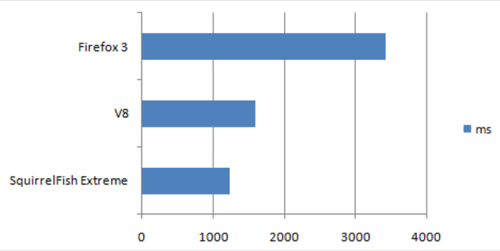When Google released Chrome just a few weeks ago, we praised it for its innovative user interface and the speed of its JavaScript rendering engine, which blew away the competition. Now, however, WebKit, the open-source project that forms the basis of both Chrome and Apple’s Safari browser, has released the latest version of its own JavaScript engine, SquirrelFish Extreme. In our benchmarks, this new engine turned out to be significantly faster than Google’s V8 JavaScript engine.

While Chrome is based on WebKit, Google replaced the SquirrelFish JavaScript engine in it with V8, a brand new engine, which, according to Google, makes better use of modern, multi-core processors than its predecessors.
Benchmarks
We used the SunSpider benchmark to test the latest version of WebKit against Google’s Chrome. The results are quite impressive. WebKit with SquirrelFish Extreme finished the benchmark in 1235ms while Chrome needed 1598ms. The latest production version of FireFox took 3424ms to complete the benchmark. We were not able to test FireFox with TraceMonkey enabled (running the benchmark crashed the browser), but judging from these results, it is clearly a lot slower than both ScquirrelFish Extreme and Chrome.

We also ran the Mozilla affiliated Dromaeo benchmark, which takes a more holistic approach and does not just look at the JavaScript engine. Here, too, SquirrelFish Extreme outperformed Chrome’s V8 (4522ms vs. 5206ms).
In case you want to try these benchmarks for yourself, you can download the latest version of WebKit with SquirrelFish Extreme from here.
Competition at Work
When Google launched Chrome, it emphasized that it wanted to bring more competition into this market and to push the development of faster and better browsers. The fact that both the Mozilla and WebKit teams are working so hard to beat Google definitely proves that there is still a lot of room for improvement and that Google’s plan is working.










